-
Posts
789 -
Joined
-
Last visited
Content Type
Profiles
Forums
Gallery
Events
Posts posted by Der Alte Rentner
-
-
6 hours ago, mtbediz said:
Sadly no. I cut the holes after I fabricated the rectangular pieces. Lesson learned. Thank you.
And Gregg, you're wise to use anything other than Basswood on the Constitution. I've used almost none of it after I did the hull. And in retrospect I wish I'd known to do it for the hull.
- Stevenleehills, mtbediz and GGibson
-
 3
3
-
Oh snap! I'm on the last three gun ports on the starboard side. Out of the blue, the holes for the false cannons are off center, fore and aft, by 1/32". While that doesn't sound like a lot, it's a chasm the size of the Grand Canyon in this scheme of things. Looks like I'm making three custom gunport lids..
My bad for not sticking with the scheme of doing one cannon at a time. I might have seen the offset before I glued the barrel in. At that point I could have made an adjustment to the hole on the back panel.
They're solidly glued in now, and I can't see trying to break them out.
Oh well... 🙄
I can't believe how many times I've had to remake these pieces out of Basswood - everyone a fail. No matter how careful I was with the drills, the 1/16" thick Basswood just kept splitting.
I finally switched to boxwood, and I lost two of those in the drilling pass as well. But in the end, I got it done. I had hoped to get the hinges on today, but I'm calling it.
Happy Independence Day to one and all.
- GGibson, Geoff Matson, Ronald-V and 3 others
-
 6
6
-
10 hours ago, mtbediz said:
Your model looks great Peter. Just curious, did you ever consider leaving the gun port lids open?
No, I did not. If you go back earlier in my build log, you will see that I chose two different methodologies for creating the supports for the false cannons. Because of my filler block approach on the port side, leaving the lids open would not have led to a pleasant result.
Look at the opening to the left of the Canon below. Lids up? I don't think so.. OnePlus to doing it this way is that with the filler block, gluing on the lids was a piece of cake.
Not so on the starboard side where I've got the thinnest lip around the border of the opening.
Furthermore, I always thought that the open lids would be subject to too much damage while handling the hull for other work. If Ever I attempt a second pass at the USS constitution, it will be at a much larger scale, and following the footsteps of everyone else with the black and white scheme. But let me get past this one first..
-
-
Gregg and Jon,
I took my magnifying glasses off, put my regular glasses back on, and determined that I can live with the slightly smaller barrels. Thank you for your thoughtful feedback.
Gregg, I love canary wood and have a supply of about 8 board feet on hand. If, for whatever reason, you strike out on the wood that you ordered, reach out to me and I can send you a piece.
To all,
It turns out that there's a minor advantage to the smaller barrels, I don't have to trim the center hole on the gunport lids as I had to for the larger barrels. If you're wondering why it's taking me so long per gunport, it's that, despite the fact that I used a pair of gunport lids as spacers when I did the planking and therefore in theory should have resulted in perfect fits now, in practice every single pair of gun port lids requires trimming to fit properly. Add to that, fitting the hinges and adding three coats of clear poly.. fiddly work? - gotta love it! 🙄
- mtbediz and Stevenleehills
-
 2
2
-
I'm rolling 7s today.
7 hours at the shipyard today. 7 false cannons and gunport lids added. Then 7 undersized false cannons discovered in that order from the Checoslavakian company placed ast year. Aaaargh!
I drilled 11/64 inch holes to accommodate the barrels. It wasn't until today, as I was gluing them into the hull, that I saw the first one that was 5/32 inch in diameter. That wouldn't be so bad, but the rest of the barrel is narrower than the others as well. Making the opening in the gun lids a smidge too large. Maybe the Casual Observer won't notice. I'll try one tomorrow.
The good news. Getting there..
You're not really going to see much difference here, but the group of seven on the right are smaller diameter than the ones on the left.
-
Today I finished all the double blocks for the spar deck tackles, and made more hooks for the single blocks, which I'll rig after the .45 mm tan rope arrives from either Ropes of Scale or Syren, whichever gets here first.
So, my attention turned to things undone. One thing I can do in the meantime is start work on the gun deck's false cannons and gunport lids. At first I thought putting the hinges on the gunport lids would be too much effort, but it turned out to be manageable after all.
I did have to scrape off the paint and primer that I put on when I thought I black was the color of choice.
One down..
-
I like what I got, but I'm not sure how I got the beige cotton confused with tan polyester when ordering the .45mm. Maybe I wanted to see the color difference between the two and didn't notice the difference in materials? Oh well..
Because I have more cents than sense, and I like the tan polyester, I just ordered the .45mm and am spending the premium to get it in one day.
Thanks for the nudge..
- GGibson, Paul Le Wol and mtbediz
-
 3
3
-
End of June update:
Work continues on making hooks and rigging them to single and double blocks for the gun tackles.
I'm almost done with the double hooks, but just having received some rope from Ropes of Scale, I thought I'd divert to a little comparison exercise.
Tan ropes came with the model shipways kit - WP1241 and WP1242. The larger of the two, the WP1242, looks pretty good, but won't fit through the holes in the blocks. At the other end of the scale we have the WP1241, which frankly just doesn't cut it. Too small.
The plans call for .45 mm for the tackles. I did get some .45 mm rope from Ropes of Scale, but it's beige. I'm not exactly loving the color, but if memory serves, that's the only color other than black that I could get from them.
I just ordered some from Syren Model Ships Company which looks to be more tan than beige in the photos. So, it's too early to make the final decision of which to use. However I need to make the decision soon because this is what gets rigged to the single blocks.
- Paul Le Wol, GGibson, mtbediz and 1 other
-
 4
4
-
On 6/28/2025 at 9:53 AM, JSGerson said:
Whether I could have done that with a belt sander as easily, I don't know.
My belt sander uses narrow strips of sandpaper - about 1". That camber you're referring to is fairly shallow and is easily shaped on the belt sander. I keep the sandpaper well worn, so it's not aggressive and it's very forgiving. With the tiny drum element on the Dremel, I'd be worried about putting dents into the camber. Throughout my build, I have used a drum sander to great effect, but for this instance, I don't think you can beat the belt sander. I guess it comes down to which tools you have the most experience with. I still don't know how Bob Hunt managed the results he did with the curved X-Acto blades - in places where a fish tail or straight chisel (IMHO) was my preferred tool.
BTW, I'm talking about this:
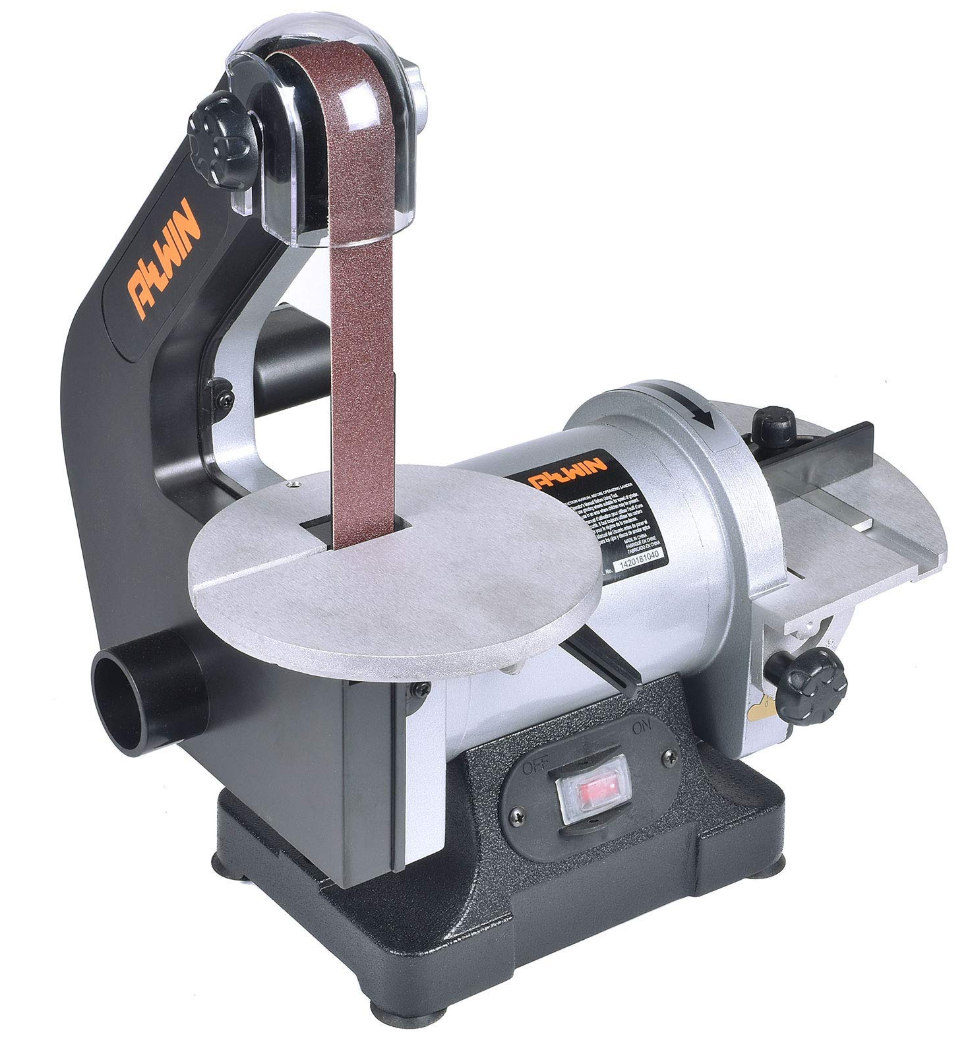
not this:
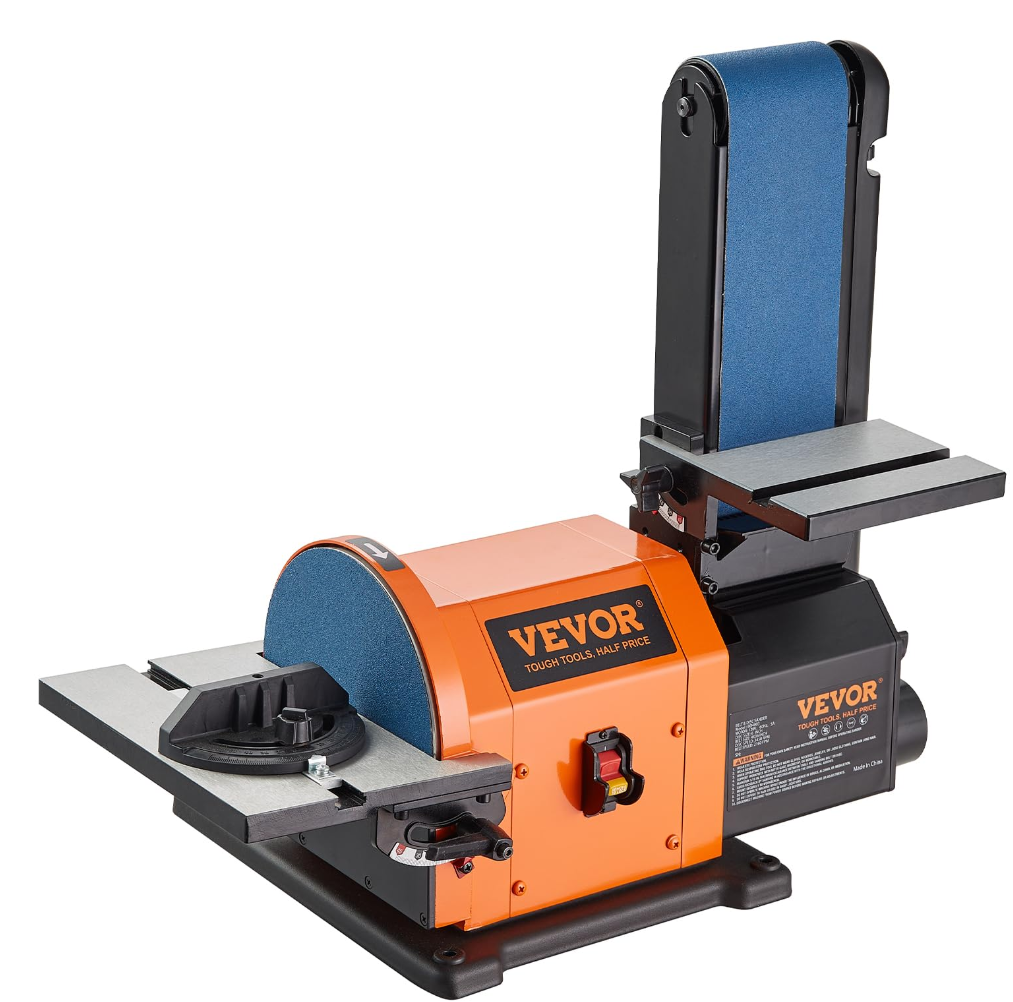
-
9 hours ago, GGibson said:
Hey Peter! Thanks for the comments and recommendations. In all of my research of completed and ongoing Constitution build logs, I saw that it appears that Jon used a Dremel or similar tool on his bulkheads (Page 5, Post #140)
Ah! So, the Dremel is basically being used like a drum sander. In the instance where Jon has removed the spar deck beams, I think I'd prefer to use my belt sander. Not having "kit bashed", I don't know if removing the spar deck beam is part of the process. The belt sander would be useless if it remained. In the end, use whatever gets you closest to the finish line (double entendre intended)..
9 hours ago, GGibson said:Ken's Constitution build log was also one of those completed logs that I read extensively and have referred back to frequently in my preparation. And I recall his discussion about the carrier deck, but I took it to mean basically the same process that others have used in having some type of base sheet under the gun deck planking, no matter whether it's plywood, basswood or some other type of flat base. I'll look at how to best fill those spaces between the bulkheads, though.
My point in bringing up Ken's carrier decks had more to do with his needing to compensate for the thickness of the carrier decks themselves. He had to trim the beams another 1/64" because he used 1/64" plywood for them. (Ken's logs: page 4, post 95 and page 13, post 369) One of the reasons I thought his approach was preferable was that he could plank the decks off of the hull, not merely to avoid the use of filler blocks..
- Unegawahya and GGibson
-
 1
1
-
 1
1
-
21 hours ago, GGibson said:
So, I cut a few of the 3/32” pieces off of the starboard side of the front bulkhead former piece and… SNAP
Been there, done that, brought home the t-shirt. 😉
As for trimming the gun deck levels with Dremels and a Dremel stand, I'd like to see some details on that when you get around to doing it. My thoughts were gravitating to a router table solution, maybe using a guide registered on the parallel edge of spar deck. Not having a Dremel tool or stand, I can't really picture what you'll be attempting.
Before you get too far along, I'd suggest you take a look at XKen's build to see if you might want to consider using a carrier deck to facilitate deck planking later. If so, you might want to trim off some more material to accommodate the thickness of the carrier deck. I retrospect, I wish I'd done that and spared myself the chore of filling all the gaps between the bulkheads with filler blocks.Ken's post is on Page 4 post #95.
-
-
You can always count on Jon to deliver the goods!
Thanks from me to Jon too, I'll be tackling these myself soon, hopefully before Mustafa reopens his shipyard in September.
- Stevenleehills and GGibson
-
 2
2
-
3 hours ago, mtbediz said:
Hello friends. I couldn't see the channel drawings in the MS kit plan sheets. Do they really not exist or am I just not finding them? Thanks.
I'm sure Jon will chime in on this momentarily, but for my part, I cannot believe that there are no drawings in the plans in the MS kit. Unfortunately I'm not at home to be able to check. So Jon? What say you?
And Mustafa! You're supposed to be on vacation. How am I ever going to catch up to you if you keep working through your summer break? 😁
-
20 hours ago, mtbediz said:
Your attention to detail is truly admirable. As for me, I just don’t have the patience to wrestle with tiny details, and I tend to dodge them whenever I can.

I could not have said it better myself, Mustafa. And I am 100% in your camp. Go for it Jon, I'll be watching from the sidelines..
-
On 6/18/2025 at 2:54 PM, g8rfan said:
once I finish the Connie I'm currently working on.
So, why are we not seeing a build log?
-
- PaddyO, mtbediz, Geoff Matson and 2 others
-
 5
5
-
Yes, indeed. Let's have a look at your plan for the spar deck planking. Tapered planks? Or straight?
- Nirvana and Unegawahya
-
 2
2
-
-
My vote is for the DRI! But, since this site is dedicated to Model Ships, I feel obligated to encourage you to return to the Constitution first. Either way, I look forward to future posts.
- Stevenleehills, Unegawahya and mtbediz
-
 3
3
-
Remember my comment that there wouldn't be much to post for a while (20 or so posts ago 😁)?
Yesterday, I spent the entire day publishing volume 2 of my build log (meaning, I printed two copies and shared the pdf with a few close friends). That marked two years under my belt at this!
With some travel plans upcoming, and a lot of repetitive block construction in the works, I will likely be less "visible" here until July. Though, like most builders on summer sabbaticals, I will be checking in to see what's up elsewhere. So, with this:
I bid you all auf wiedersehen
P.S. In case you're wondering, the cover shots are the state of the project at the beginning of the year in question.
-
21 hours ago, Unegawahya said:
Avro 504K
Nice.
Looking forward to seeing the finished project!!
As an aside..
In a conversation with a friend who I shared my build log with, he mentioned that he grew nostalgic for the days when he build model airplanes out of balsa So, I asked him if he had any he would share with me. This was his response: "This is all that remains." 🙄
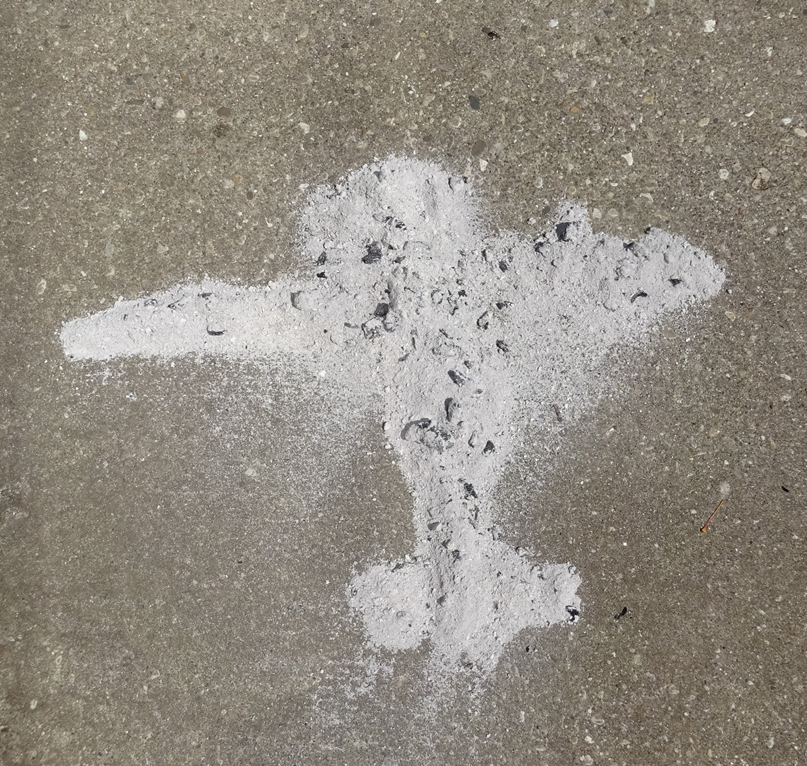
It just dawned on me that my next project, after Conny, should be a Fokker Triplane! That's something I've been wanting to do almost as long as I've wanted to build the Constitution. I saw this one at an airfield somewhere in Wisconsin in my early 20's, and I've wanted to build one ever since.

Thanks for the nudge. I'm putting a recurring reminder in my calendar so I don't forget.
Congrats on the hammock netting. Excellent workmanship, (which I will NOT be attempting to emulate 😁)
and enjoy your sabbatical.
- mtbediz and Unegawahya
-
 1
1
-
 1
1
-
14 hours ago, GGibson said:
Dang, in just dry fitting the three bulkhead former pieces, I can see that this is going to be a big ship! Yay!
Until you start messing with the small stuff, like 1/8"double blocks.. I wish it were twice the size!
The vertical reference lines are there to assist you in keeping the bulkheads perpendicular to (hmm, what exactly are they perpendicular to?) the future deck or provide parallel spacing between bulkheads. I must have missed that detail in my build, or thought it pointless. The horizontal reference line is to help correctly place the bulkheads on the false keel. In the photo on the left, note the intersection of reference lines at bulkhead F. In the one on the right, note that I did not use the vertical reference lines. My build log has no reference to how I kept the bulkheads perfectly vertical.


but, I do have this note:
"It seems that all this prep work with the reference lines may have been academic. So far, every part I’ve slid onto the false keel has bottomed out slot to slot and the reference marks have all lined up."
Have fun!

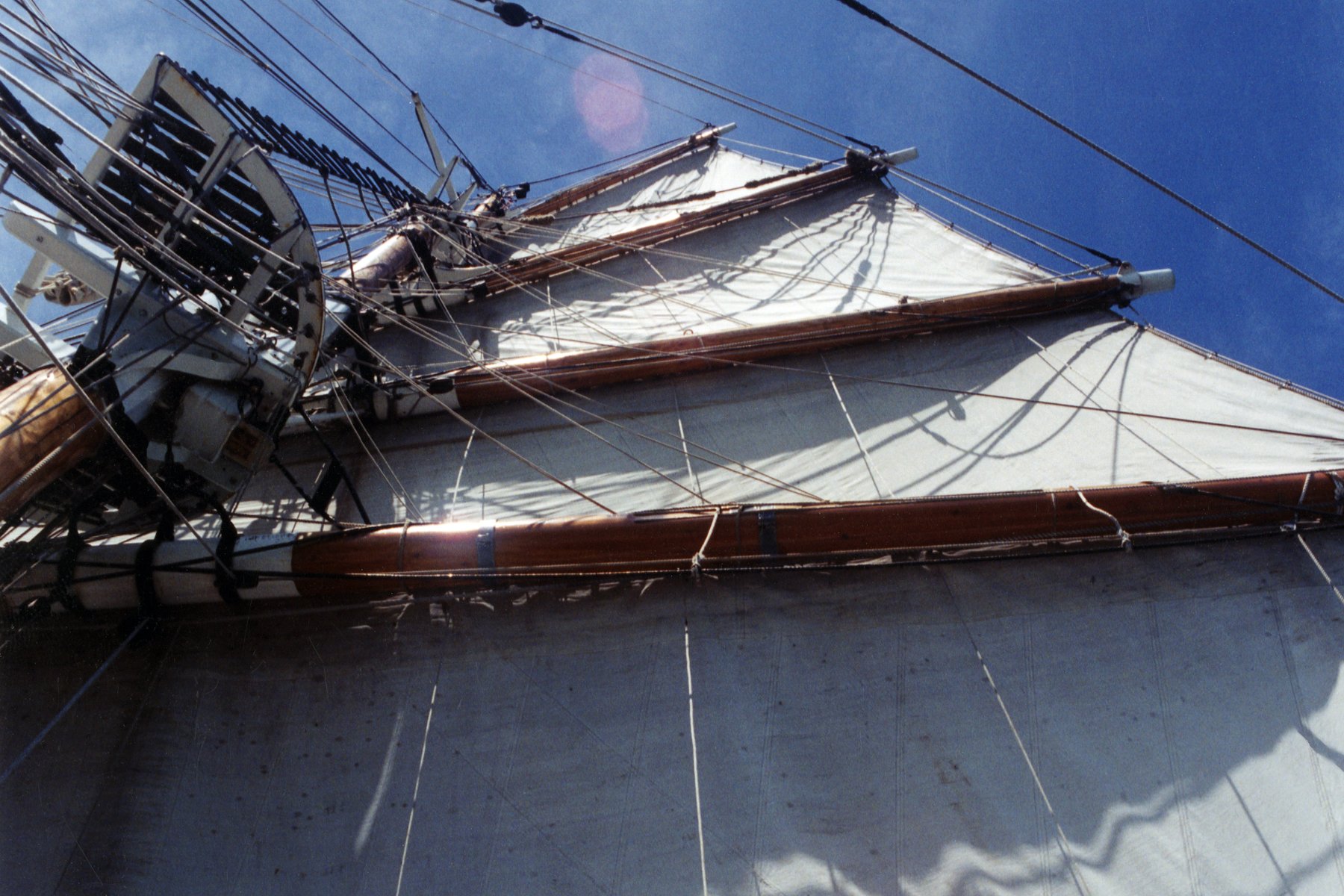
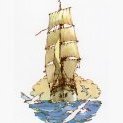
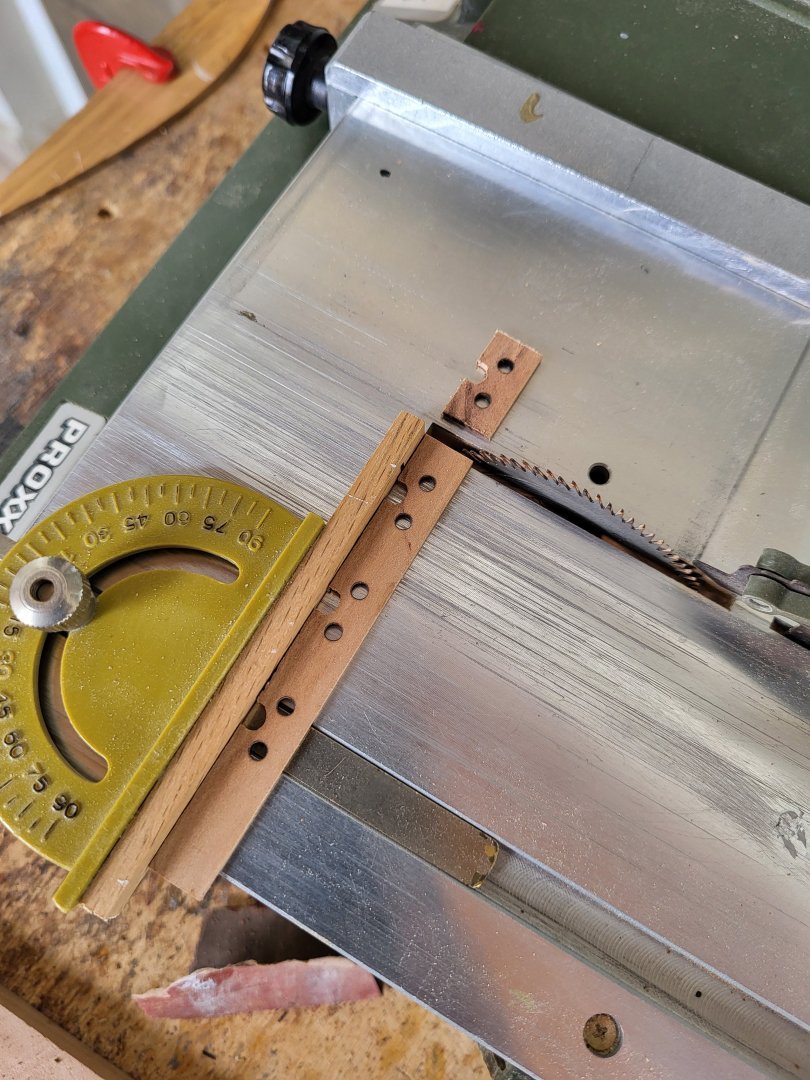
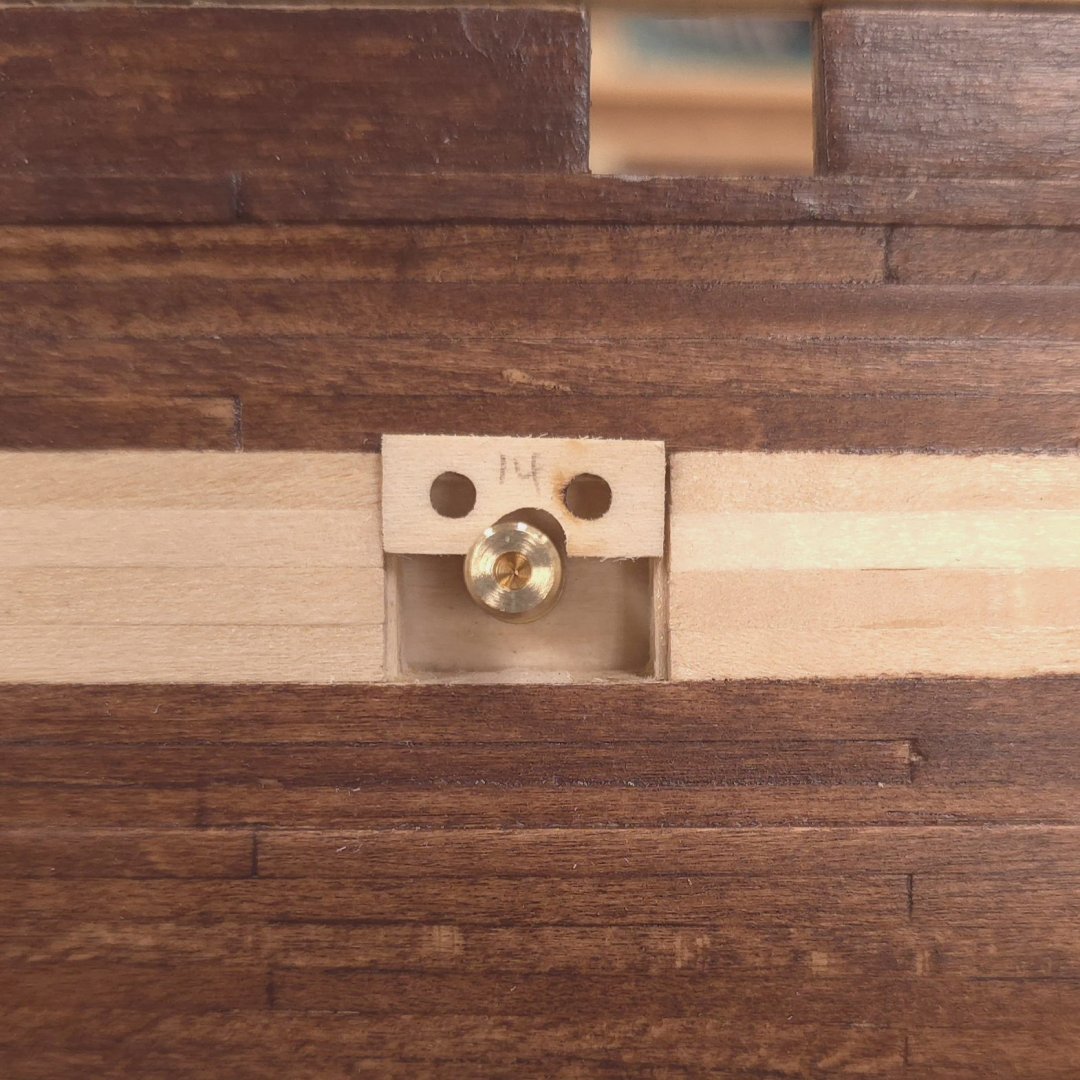
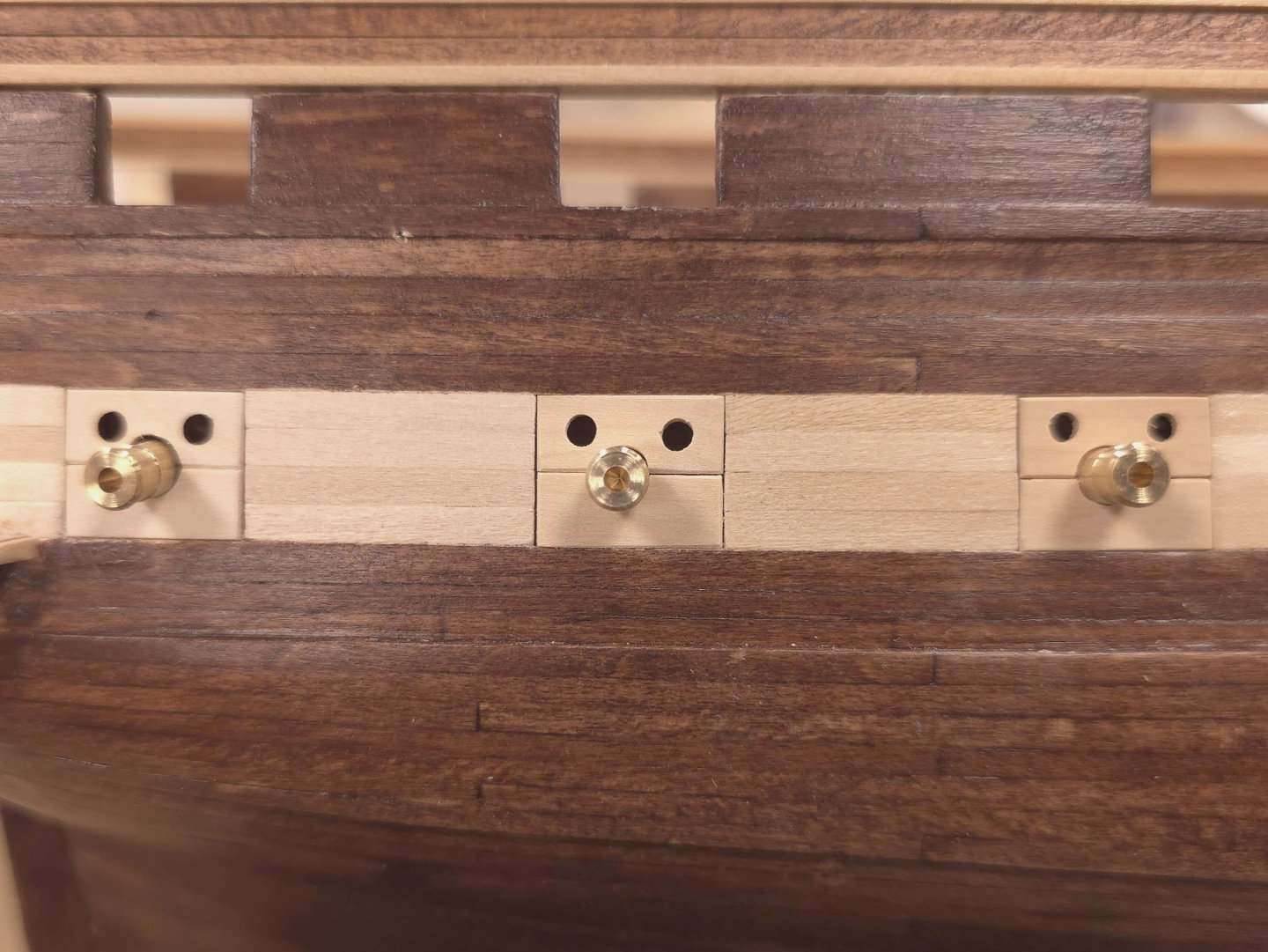
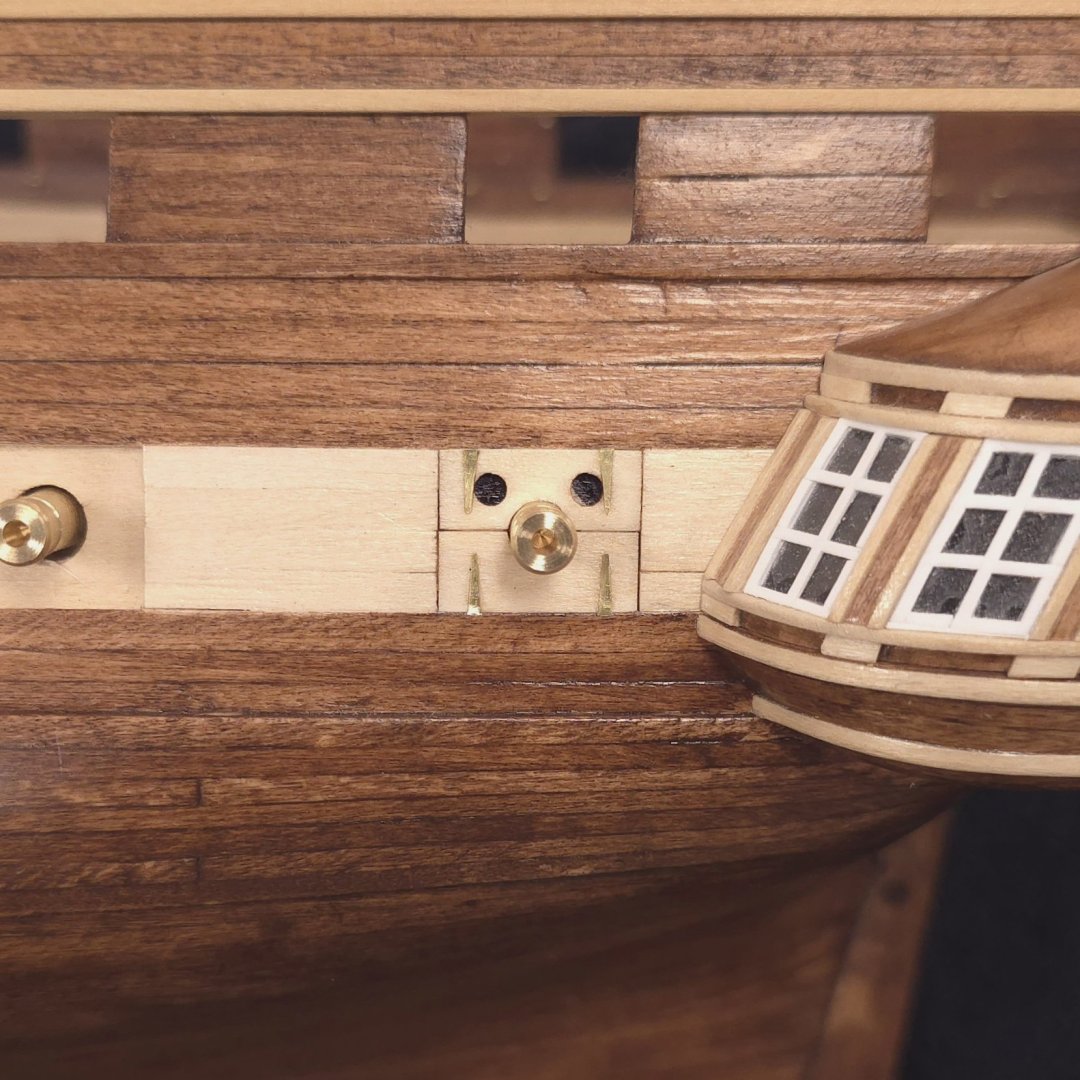
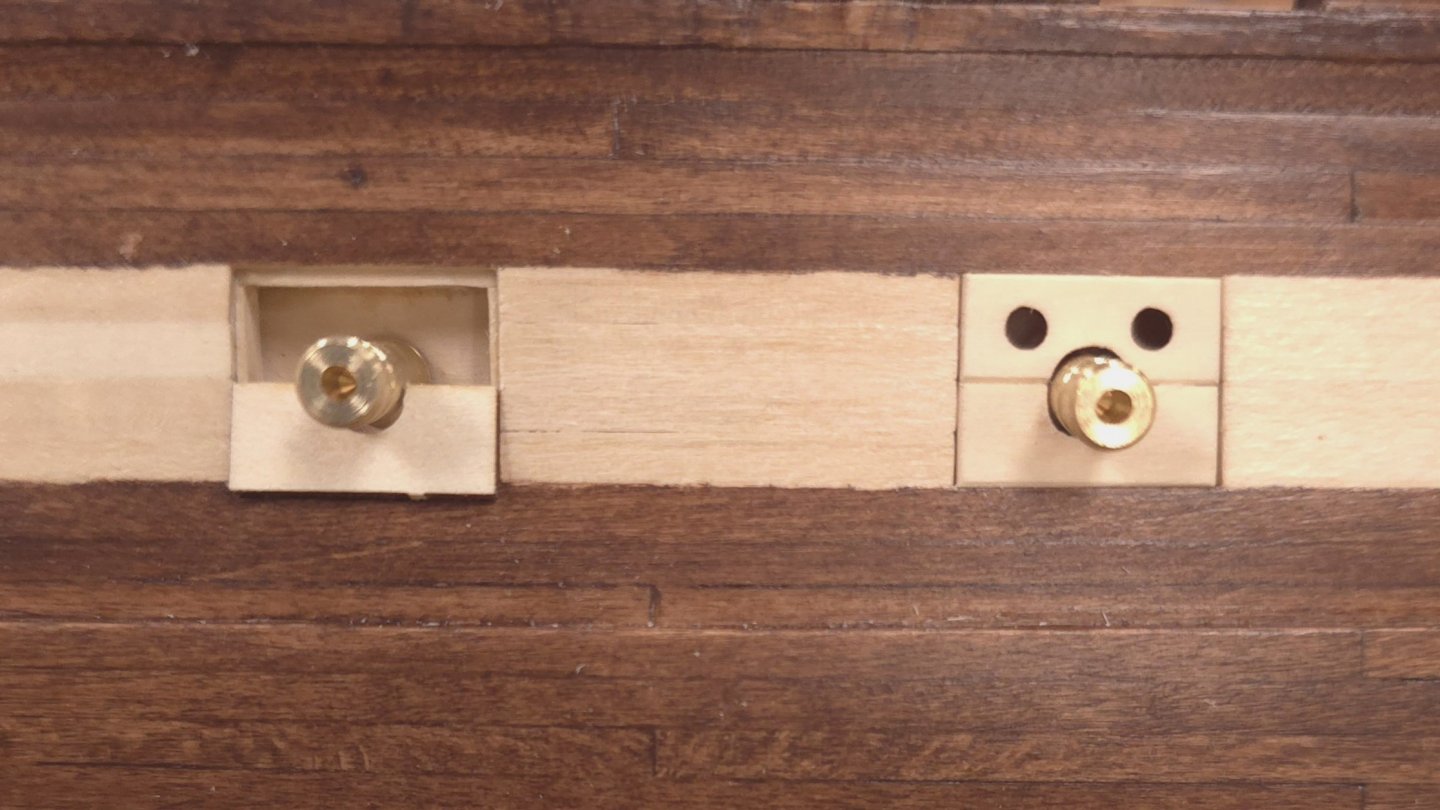
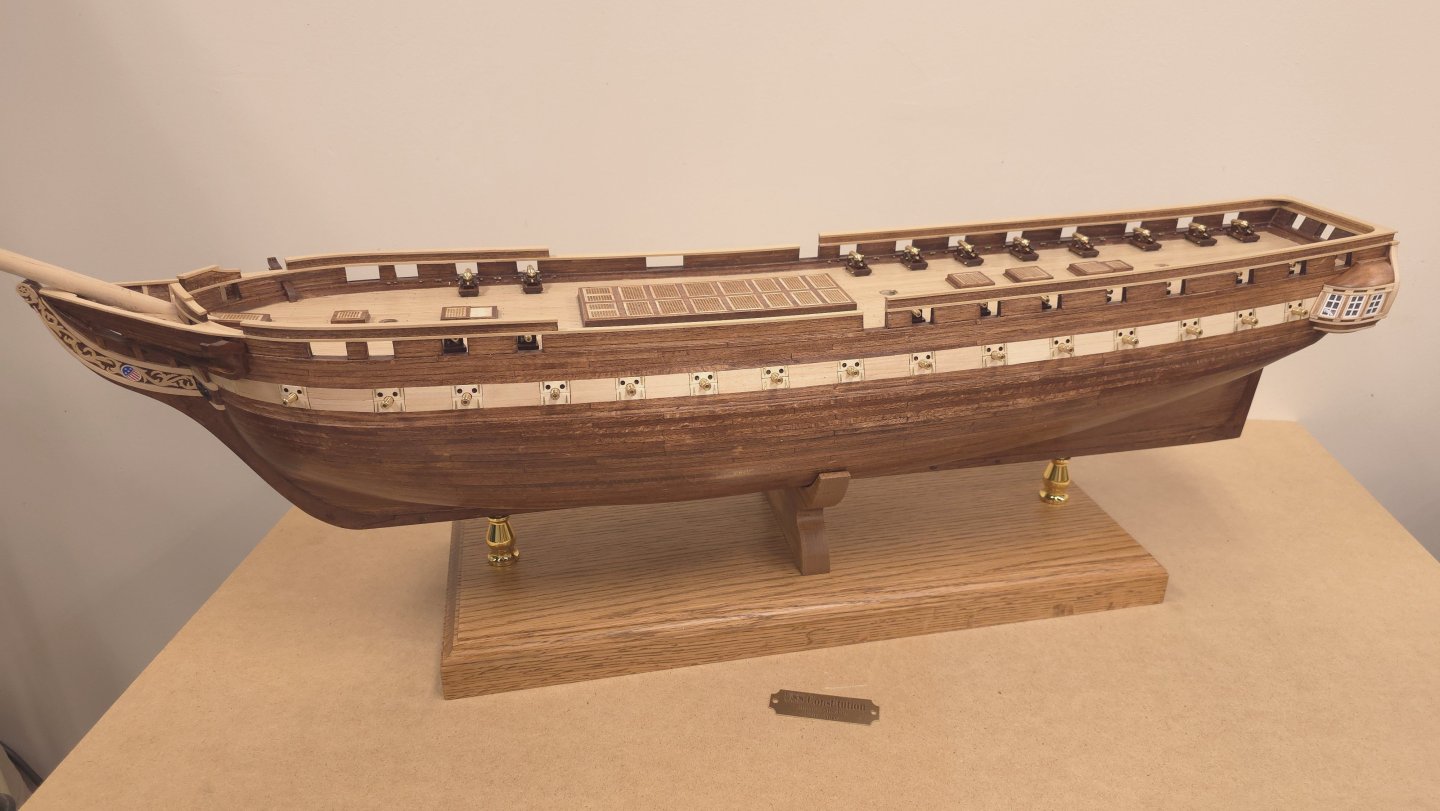

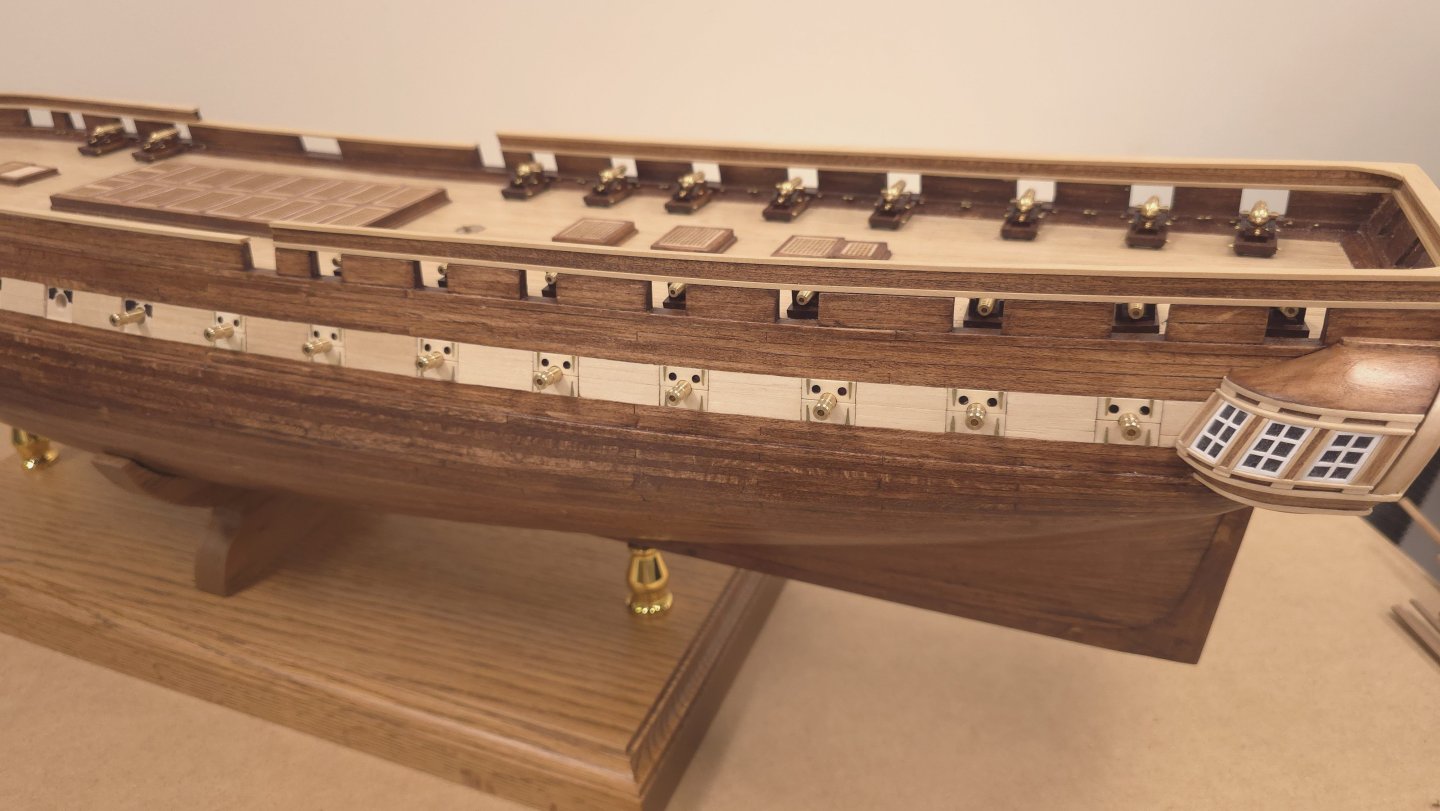
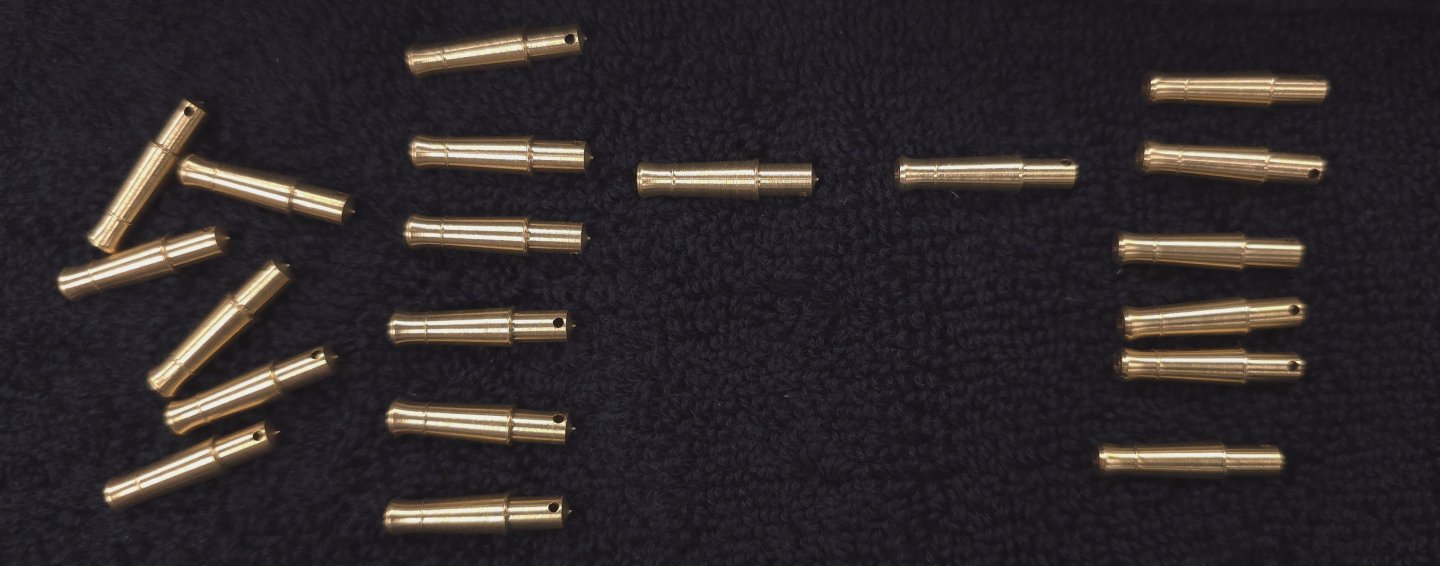
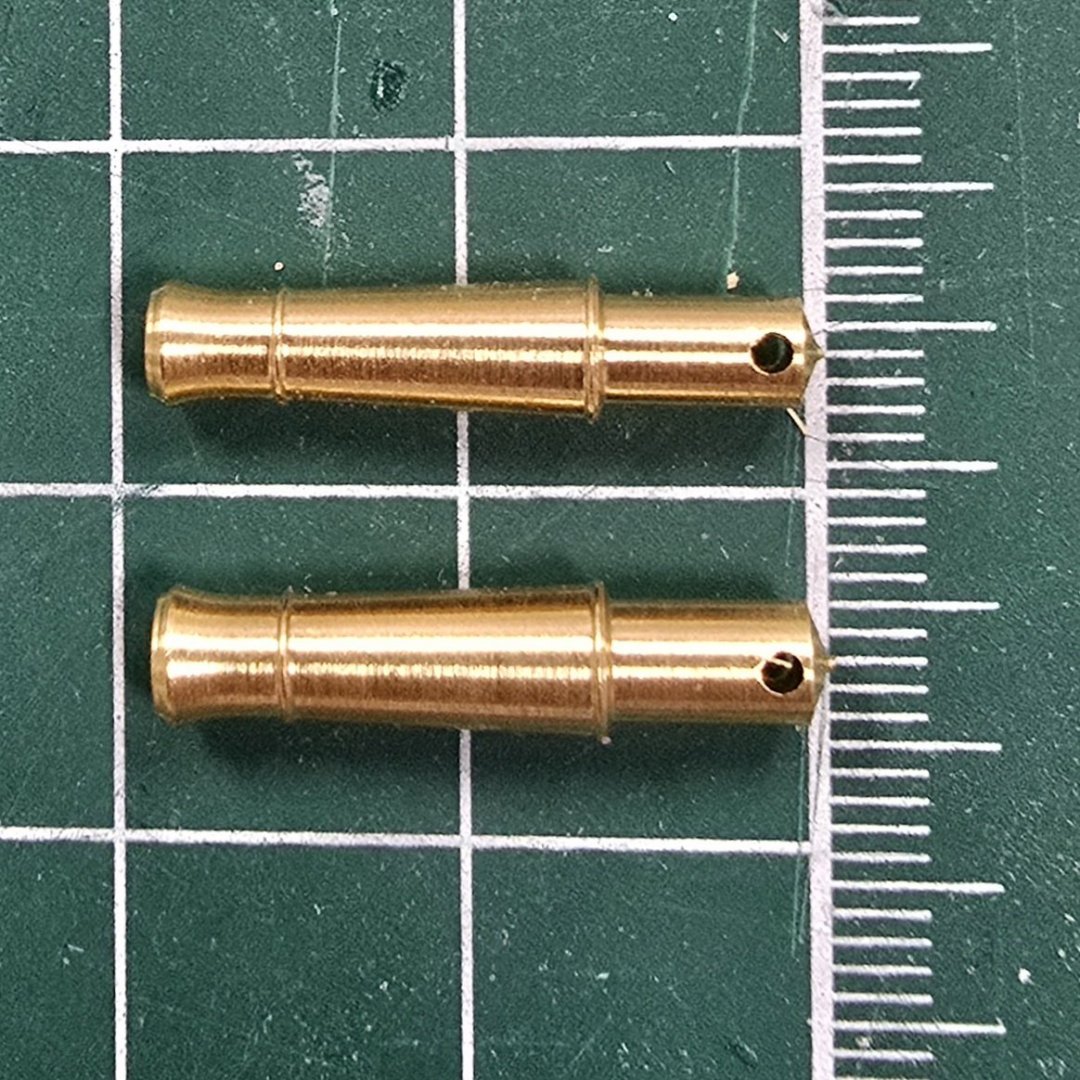
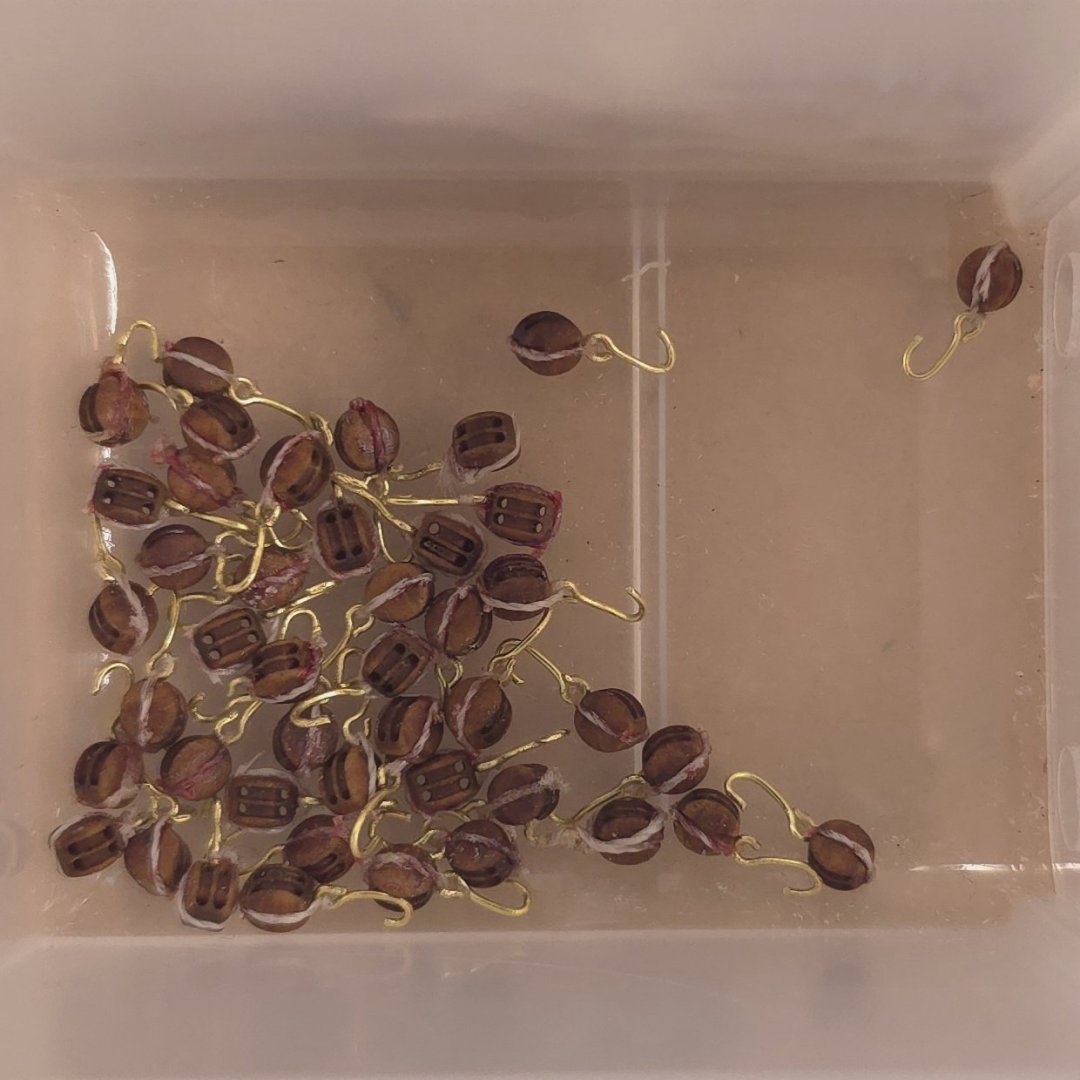
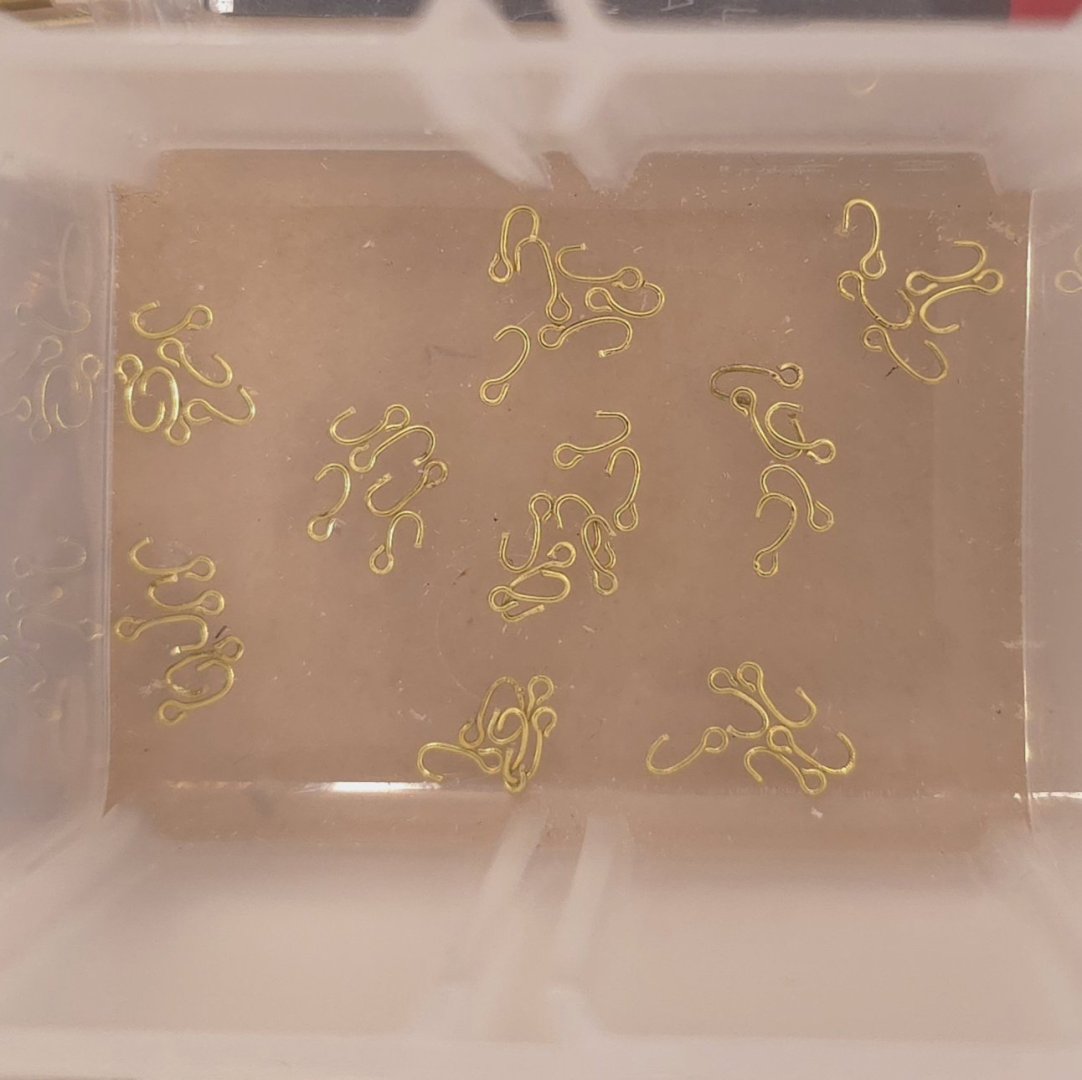
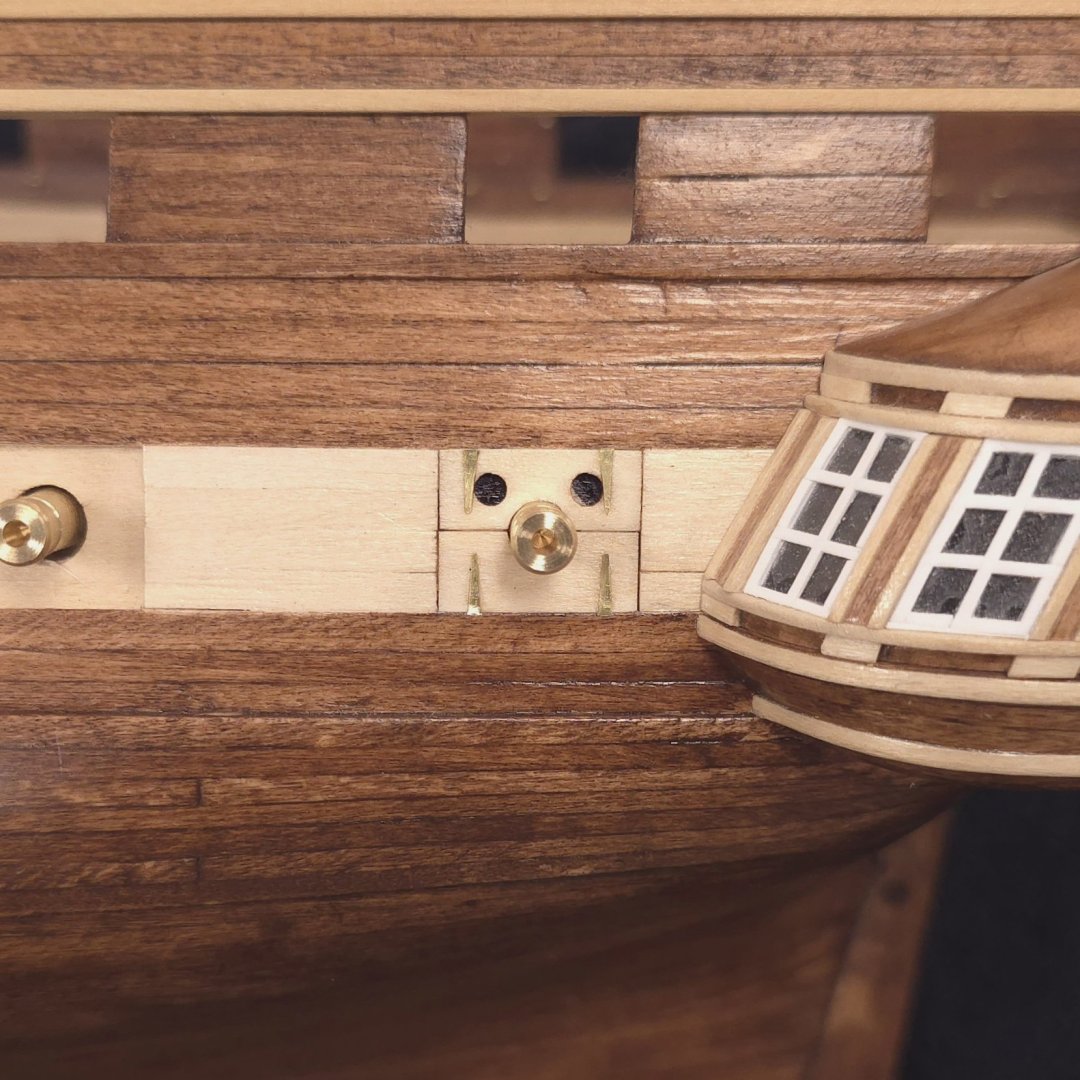


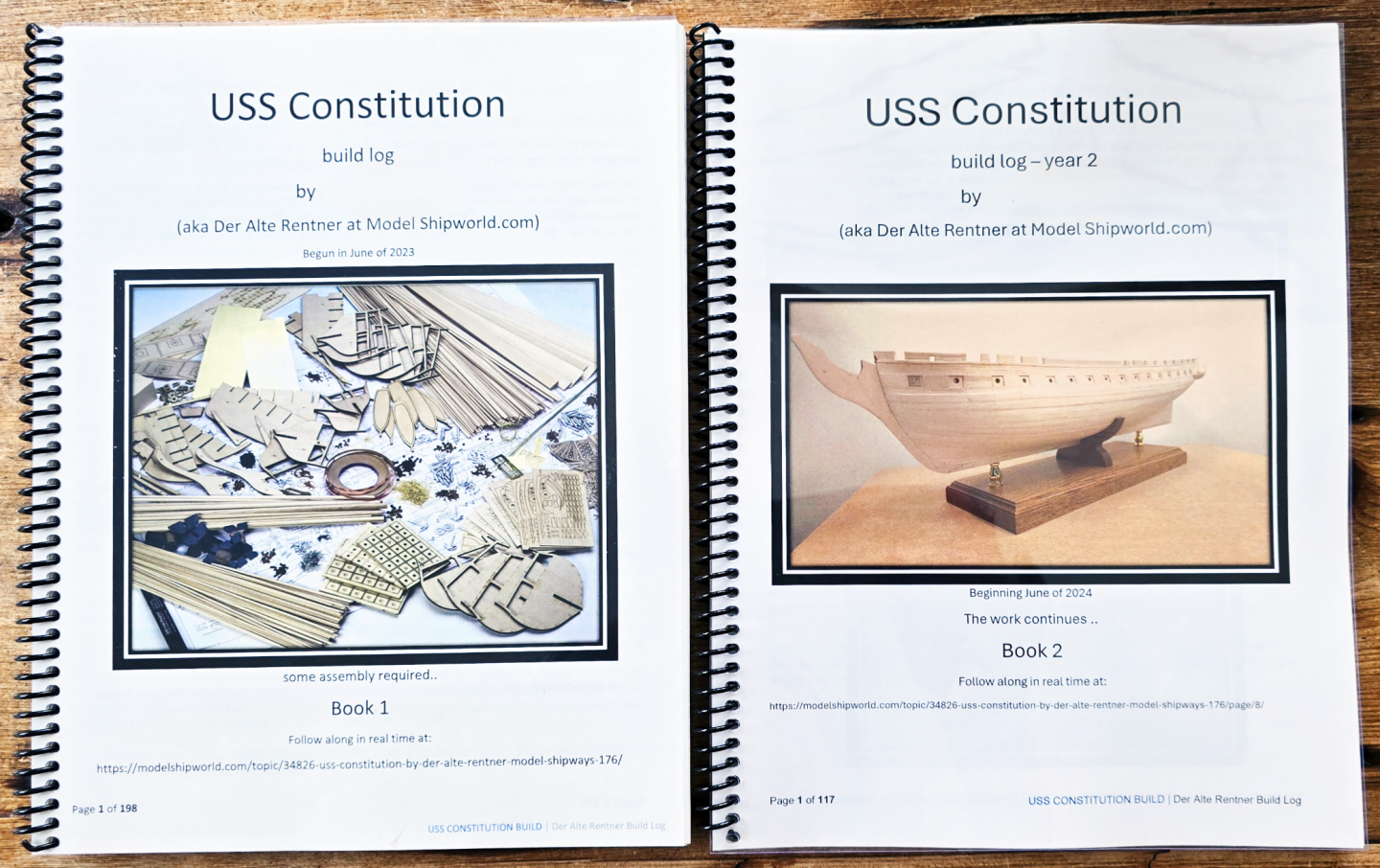
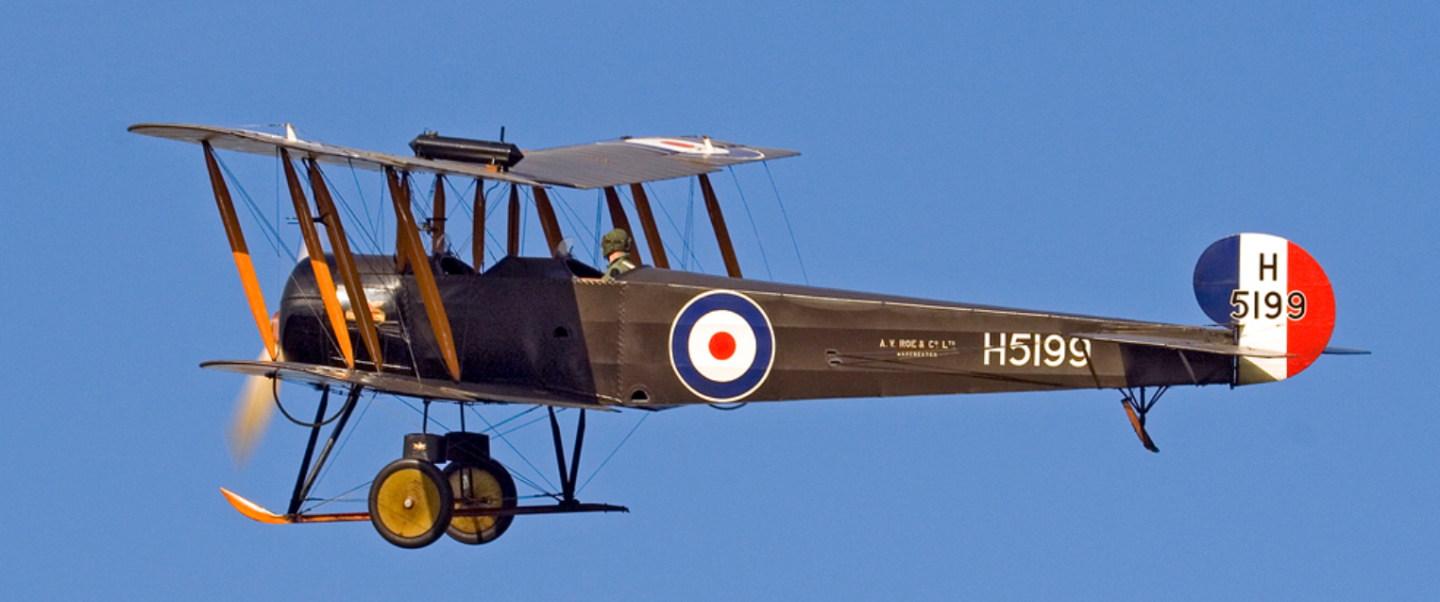
USS Constitution by Der Alte Rentner - Model Shipways - 1/76
in - Kit build logs for subjects built from 1751 - 1800
Posted · Edited by Der Alte Rentner
Sorry, I forgot to answer this in my last reply. Yes, indeed, I put waste wood behind the pieces being cut. Unfortunately the drill itself catches on the Basswood and sucks it up. Note: I had no problem with the one 1/16" drill. It's the 3/16" drill for center hole that proved problematic. Rookie mistake?
This was not quite the same problem with the boxwood. In that case the grain of the boxwoods split as I was drilling that Center hole. Part of the problem with the Basswood is that I took the 3/32" material that the gunport lids came from to try to make the replacement pieces first.
I've made this point several times in the past, but I'll double down on it now. The materials that come with this kit are abysmal. Had I known that at the onset, I would have replaced everything with boxwood on day one. Or chosen contrasting hardwoods to achieve the finish that I'm hoping for.